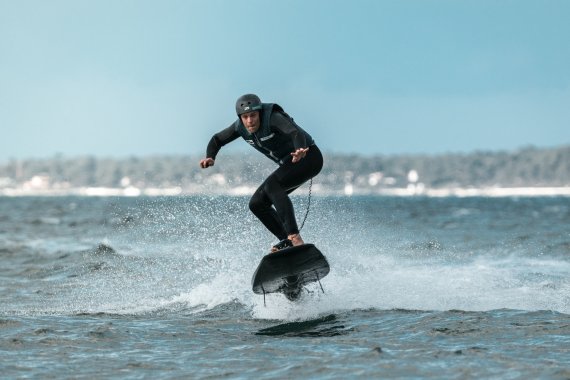Best Tips To Considering E Surfboards
Wiki Article
What's The New Electric Surfboard Craze?
The summer months are the year when visiting the beach is the latest craze. And there's no getaway quite like visiting the beach and listening to the sound of the waves or the echo of the ocean in the distance. We can even enjoy the thrill and excitement that comes from surfing the ocean on an Electric Surfboard. What exactly is an Electric Surfboard and what does it do? We'll be covering everything you need about Electric Surfboards in this article. E Foil is their stunning equivalent.
What Exactly Is An Electric Surfboard, And How Does It Work?
Everyone is aware of what a surfing board appears like and how it's used. The skills needed to catch and ride waves on a surfboard are not to be forgotten. In the same way, the Electric Surfboard is a surfboard as well. It's just one difference: you don't need to have experience to use it or catch a wave. Because an Electric Surfboard uses an electric motor to propel you forward, it can be done in just seconds. An Electric Surfboard also allows you glide across huge lakes. And at the same time, achieving amazing speeds. It can also perform sharp turns and allow you fly just a few inches higher than the water's surface. Some users describe the feeling as "feeling like you're flying".
Is An Electric Surfboard Faster Than A Traditional Surfboard?
Electric surfboards are often faster than traditional surfboards, particularly in flat water conditions. Electric surfboards have a motor that produces more power than traditional surfboards. Some surfboards powered by electric motors travel at speeds of up to 30 mph while other models reach speeds of 20 to 20 mph.
Traditional surfboards, on the contrary, are able to travel at speeds of around 10 miles per hour. This is due to the power of the waves and the rider's physical ability. Overall, electric surfboards can be more efficient than traditional surfboards, however speed varies based on a variety of variables. See the most popular electric surfboards blog for site examples including best electric surfboard, gas powered surfboard, cheapest efoil, used efoil for sale, e foil board, jet board surfboard, hydrofoil board with motor, cheapest electric surfboard, jetboard for sale, hydrofoil electric surfboard and more.

How Do The Water Conditions Impact Electric Surfboards
The kind of water you are in can have a major influence on the performance and handling of electronic surfboards. Here are a few examples of how the different conditions of water can affect the performance of electric surfboards. This makes it a good place for novices to practice and master the art of riding the board. The calm water is ideal for using the board's high-speed capabilities, because there aren't many obstacles or dangers to avoid.
Choppy Water Electric surfboards are more difficult to control and balance in choppy waters. The waves and currents create a tilt and bounce, which makes it challenging to keep balance. Experienced riders may enjoy riding in turbulent water conditions. This requires more experience and control.
Wavescan be exciting riding an electric surf board on the waves. The board's speed can be utilized to ride waves and catch longer durations of time. However, it's important to keep in mind that surfing in waves can be more dangerous, as there are more obstacles and hazards to stay clear of. Riders should only attempt to surf in waves if they have the required level of proficiency and expertise.
The conditions of the water can have an impact on the capabilities and handling of electronic surfboards. Surfers should consider the water conditions prior to riding to make sure they have a safe and enjoyable experience.
What Is The Minimum Time Needed To Learn The Electric Surfboard?
It may take a beginner some time to master the electric board. This is dependent on several variables, such as prior experiences with similar activities, physical capability, and aptitude. While it might take a bit of time to learn how to ride an electric board but you should feel comfortable and confident when you're done. Regular training and lessons with a qualified instructor are essential to achieve this.
It is important to gradually increase the difficulties of riding conditions. This means you should begin by riding in calm water before moving on to more challenging conditions such as waves, currents, and currents. This can boost confidence and help improve skills.
The great thing about electronic surfing is that it can be learned quickly through consistent practice and dedication. Take a look at the best this post on e surfboards for blog tips including electric hydrofoil surfboard price, powered hydrofoil board, jet board surfboard, electric jet surfboard, foil efoil, e surfboards, e surfboard price, e surfboards, powered hydrofoil board, hydroplane surfboard and more.

What Should You Think About Before Buying An Electric Surfboard?
There are a variety of factors you need to consider when purchasing an electric surfboard. Here are some key things to keep in mind: Weight of the RiderThe weight of the user is an important aspect to think about when selecting an electric surfboard. The buoyancy of an electric surfboard is influenced by how heavy the user is. It can also affect its stability and control. A board should have the capacity to support a load enough to accommodate the rider.
Board weight- It's crucial to take into consideration the board's weight. A heavier board may prove more difficult to transport or move. A board that is lighter, but, it is more durable and stable.
Board Width and Length The length and width of the board can impact its stability and its handling in the water. Longer boards usually offer better stability and are ideal for beginner riders, while shorter boards may be more responsive and maneuverable, however they require more expertise and experience in handling.
Volume: The volume is related to the board's buoyancy. It can influence the stability of the board and its maneuverability in water. Boards with a bigger volume tend to be more buoyant and stable while boards that have less volume are agile and flexible. However, they might require more experience and skill.
Portability- When deciding on the weight or size of your board, take into consideration how it is moved around. A board that's large or heavy could be difficult to transport from and to the water, whereas a more portable board may be more manageable and easier to transport.
Consider your weight, size of the board and portability to ensure fun and safe surfing. Have a look at the best read full article about e foil for site tips including battery surfboard, electric stand up surfboard, best efoil, powered hydrofoil board, efoil surfing, e foil price, efoil surfing, e foil for sale, hydroplane foil, electric foil board price and more.

What's The Difference Between Inflatable And Solid Electronic Surfing Boards?
The main differences between inflatable and solid electric surfboards are in their shape, size, price, battery life, speed, and transporting/storing. The main differences are as follows: Shape and size - Solid electric surfboards are more traditional design and come in a variety of sizes, including shortboards and longboards. Inflatable electric surfing boards, on the contrary are more rectangular in design and are smaller because of their inflatable design.
Price: In general inflatable and solid electric surfboards are more expensive due to their more intricate design.
Battery life- The battery life of electric surfboards differs widely depending on the specific model and the usage. Because of their larger dimensions and more powerful motors, solid electric surfboards have longer battery lives as compared to inflatable surfboards.
Speed: Solid electric surfboards tend to be faster than inflatable surfboards due to their sleeker appearance and more powerful motors.
Storage and Transport - Inflatable electric surfing boards are typically easier to transport and store because of their compact size and lightness after deflating.
It is all dependent on the purpose of use and personal preference. Inflatable electric surfingboards are great for those who enjoy their portability and storage ease. Solid surfboards however, are more suitable for those who require speed and greater performance.